
Calculating Interest
Interest is a fee paid for the use of someone else’s money.
If you put money in a savings account, you receive inter-
est from the bank. If you take out a loan, you pay inter-
est to the lender. The amount of money you invest or
borrow is called the principal. The amount you repay is
the amount of the principal plus the interest.
The formula for simple interest is found on the for-
mula sheet in the GED. Simple interest is a percent of the
principal multiplied by the length of the loan:
Interest = principal ×rate ×time
Sometimes, it may be easier to use the letters of each
as variables:
I= prt
Example
Michelle borrows $2,500 from her uncle for
three years at 6% simple interest. How much
interest will she pay on the loan?
Step 1: Write the interest as a
decimal. 6% = 0.06
Step 2: Substitute the known
values in the formula I= prt
and multiply. = $2,500 ×0.06 ×3
= $450
Michelle will pay $450 in interest.
Some problems will ask you to find the amount that
will be paid back from a loan. This adds an additional
step to problems of interest. In the previous example,
Michelle will owe $450 in interest at the end of three
years. However, it is important to remember that she will
pay back the $450 in interest as well as the principal,
$2,500. Therefore, she will pay her uncle $2,500 + $450
= $2,950.
In a simple interest problem, the rate is an annual, or
yearly, rate. Therefore, the time must also be expressed in
years.
Example
Kai invests $4,000 for nine months. Her invest-
ment will pay 8%. How much money will she
have at the end of nine months?
Step 1: Write the rate as a decimal. 8% = 0.08
Step 2: Express the time as a fraction
by writing the length of time in months
over 12 (the number of months in a year).
9 months =
1
9
2
=
3
4
year
Step 3: Multiply. I= prt
= $4,000 ×0.08 ×
3
4
= $180
Kai will earn $180 in interest.
Probability
Probability is expressed as a fraction and measures the
likelihood that a specific event will occur. To find the
probability of a specific outcome, use this formula:
Probability of an event =
Example
If a bag contains 5 blue marbles, 3 red marbles,
and 6 green marbles, find the probability of
selecting a red marble:
Probability of an event =
=
5+
3
3+6
Therefore, the probability of selecting a red
marble is
1
3
4
.
Helpful Hints about Probability
■If an event is certain to occur, the probability is 1.
■If an event is certain not to occur (impossible),
the probability is 0.
■If you know the probability of all other events
occurring, you can find the probability of the
remaining event by adding the known probabili-
ties together and subtracting their total from 1.
Number of specific outcomes
Total number of possible outcomes
Number of specific outcomes
Total number of possible outcomes
–DATA ANALYSIS, STATISTICS, AND PROBABILITY–
420

Graphs and Tables
The GED exam will test your ability to analyze graphs
and tables. Read each graph or table very carefully before
reading the question. This will help you to process the
information that is presented. It is extremely important
to read all of the information presented, paying special
attention to headings and units of measure. Here is an
overview of the types of graphs you will encounter:
■Circle graphs or pie charts
This type of graph is representative of a whole
and is usually divided into percentages. Each sec-
tion of the chart represents a portion of the
whole, and all of these sections added together
will equal 100% of the whole.
■Bar graphs
Bar graphs compare similar things with differ-
ent length bars representing different values. Be
sure to read all labels and legends, looking care-
fully at the base and sides of the graph to see what
the bars are measuring and how much they are
increasing or decreasing.
■Broken-line graphs
Broken-line graphs illustrate a measurable
change over time. If a line is slanted up, it repre-
sents an increase whereas a line sloping down
represents a decrease. A flat line indicates no
change as time elapses.
Scientific Notation
Scientific notation is a method used by scientists to con-
vert very large or very small numbers to more manage-
able ones. You will have to make a few conversions to
scientific notation on the GED. Expressing answers in
scientific notation involves moving the decimal point
and multiplying by a power of ten.
Example
A space satellite travels 46,000,000 miles from
Earth. What is the number in scientific notation?
Step 1: Starting at the decimal point to the right
of the last zero, move the decimal point until
only one digit remains to its left
46,000,000 becomes 4.6.
Step 2: Count the number of places the decimal
was moved left (in this example, the decimal
point was moved 7 places), and express it as a
power of 10:
107
Step 3: Express the full answer in scientific nota-
tion by multiplying the reduced answer from
Step 1 by 107:
4.6 ×107
Increase
Decrease
No Change
Increase
Decrease
Change in Time
Unit of Measure
Comparison of Roadwork Funds
of New York and California
2001–2005
New York
California
KEY
0
10
20
30
40
50
60
70
80
90
2001 2002 2003 2004 2005
Money Spent on New Roadwork
in Millions of Dollars
Year
25%
40%
35%
–DATA ANALYSIS, STATISTICS, AND PROBABILITY–
421

Example
An amoeba is .000056 inch long. What is its
length in scientific notation?
Step 1: Move the decimal point to the right until
there is one digit other than zero to the left of
the decimal.
.000056 becomes 5.6
Step 2: Count the number of places moved to
the right—5. However, because the value of the
number is being increased as it is expressed in
scientific notation, it is written as a negative
exponent.
10−5
Step 3: Express the full answer in scientific
notation:
.0000056 becomes 5.6 ×10−5
General Strategies for Math
Questions
■Skipping and returning.
If you are unsure of what you are being asked
to find, if you don’t know how to solve a problem,
or if you will take a long time to find the correct
answer, skip the question and come back to it
later. Do the easy problems first. The GED is not
arranged with increasingly difficult questions.
The difficult questions appear alongside the
easier questions. Therefore, it is important to skip
difficult problems and come back to them.
■Plugging in.
There will be times when you should use the
answer choices to find the correct answer. This
can be done when you have a problem that gives
you a formula or equation. Plug in answers when
you feel it will be quicker than solving the prob-
lem another way, and when you have enough
information to do so.
■Eliminating.
Eliminate choices you know are wrong so that
you can spend more time considering choices
that might be right. It may sound like a simple
strategy, but it can make a big difference.
■Making educated guesses.
It’s important to remember you are not penal-
ized for a wrong answer. If you don’t know the
answer to a question and you are approaching the
time limit, simply use the last few minutes to
make an educated guess to the remaining ques-
tions. If you can eliminate some of the answer
choices, you will improve your odds of getting
it right.
–DATA ANALYSIS, STATISTICS, AND PROBABILITY–
422

Directions
Read the following questions carefully and choose the best answer for each question. Some questions may refer
to a figure, table, or graph. Be sure to answer every question; you will not be penalized for incorrect answers. Do
not spend too much time on any one question so you can be sure to complete the questions in the allotted time.
Record your answers on the answer sheet provided on the following page. Make sure you mark the answer in
the circle that corresponds to the question.
Note: On the GED, you are not permitted to write in the test booklet. Make any notes or calculations on a sep-
arate piece of paper.
CHAPTER GED
Mathematics
Practice
Questions
NOW IT’S time to put all that you have learned about mathematics
and problem solving into practice. In the following section, you will find
100 multiple-choice questions like those you will find on the GED
Mathematics Test.
45
423







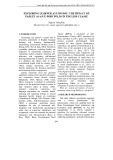
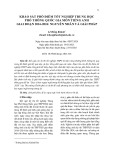
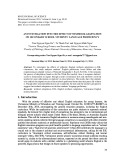
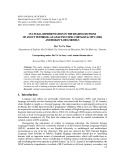
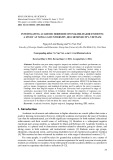

![Tài liệu Từ vựng tiếng Anh Trung cấp [mới nhất]](https://cdn.tailieu.vn/images/document/thumbnail/2025/20250913/nguyentuan250421@gmail.com/135x160/99491757910839.jpg)
![Tài liệu Từ vựng Tiếng Anh theo chủ đề [mới nhất]](https://cdn.tailieu.vn/images/document/thumbnail/2025/20250913/namdhuet@gmail.com/135x160/83251757753810.jpg)



![Tài liệu Từ vựng tiếng Anh cho bé [chuẩn nhất/mới nhất]](https://cdn.tailieu.vn/images/document/thumbnail/2025/20250731/huadaithesang2509@gmail.com/135x160/18631754013896.jpg)








